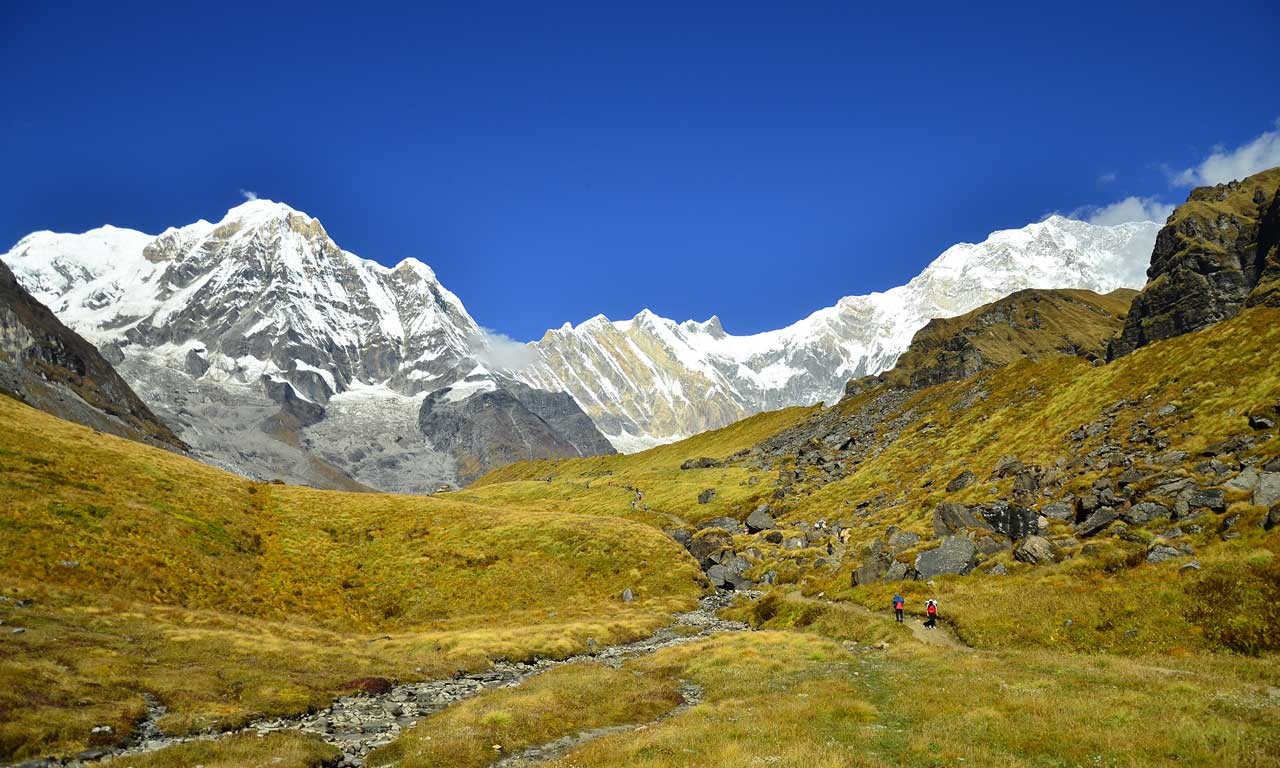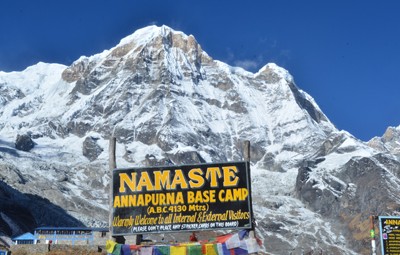Dreaming of standing amidst a colossal amphitheater of snow-capped giants? The Annapurna Base Camp (ABC) trek is more than just a hike; it's an unforgettable Himalayan adventure that immerses you in breathtaking scenery, rich local culture, and a profound sense of accomplishment. Often considered a moderate-level trekking route, it's accessible to a wide range of trekkers, from seasoned adventurers to those taking their first steps into the high mountains.
Trek to the Heart of the Nepal Himalayas Annapurna Base Camp
Table of Contents
Trek to the Heart of the Himalayas: Your Essential Guide to the Annapurna Base Camp (ABC) Trek
While the Everest Base Camp trek often steals the spotlight, the ABC trek offers a unique charm with its diverse landscapes, charming Gurung villages, and the iconic "Annapurna Sanctuary" – a natural arena surrounded by towering peaks like Annapurna I, Machhapuchhre (Fishtail Mountain), Hiunchuli, and Annapurna South.
Planning Your Annapurna Base Camp Journey: Key Details
Successfully navigating the Annapurna region requires some thoughtful preparation. Here's a breakdown of what you need to know:
Best Time to Trek to Annapurna Base Camp
The Annapurna Base Camp trek is best enjoyed during two primary trekking seasons:
Autumn (September to November): This is widely considered the best time to trek due to stable weather conditions, clear skies, and moderate temperatures. The monsoon rains have cleared, offering crisp panoramic views of the mountains.
Spring (March to May): Another excellent period, characterized by blooming rhododendron forests and pleasant temperatures. While views can occasionally be hazy, the vibrant flora adds a special charm.
Winter (December to February) offers tranquil, less crowded trails but demands serious preparation for cold weather and potential heavy snowfall. Monsoon (June to August) brings heavy rain, slippery trails, and leeches, making it a challenging, though lush, experience for the very adventurous.
Click on the link to get the full detailed information about the seasons with pictures (You will be surpised). Best time to trek to ABC
Trek Difficulty & Duration: The ABC trek difficulty
The ABC trek difficulty is generally rated as moderate. It doesn't demand technical climbing skills, but a good level of physical fitness and stamina is crucial. Expect daily walking hours of 5-7 hours, with significant altitude gain as you ascend. The infamous 3,300 stone steps to Ulleri are an early test of endurance! Most itineraries range from 7 to 14 days, with 10-12 days being a popular choice, allowing for proper acclimatization.
- Trekking in Nepal ABC for beginners and children. (Blog post with pictures and video)
Essential Packing List
Packing smart is key for a comfortable and safe journey. Your packing list should include:
Footwear: Worn-in hiking boots with good ankle support are non-negotiable. Consider lightweight shoes or sandals for the evenings.
Layered Clothing: Essential for adapting to varying temperatures at different altitudes. Think thermal base layers, fleece jackets, and a down jacket for colder evenings and higher elevations.
Waterproofs: A good quality rain jacket and waterproof trousers are vital, especially during shoulder seasons or unexpected showers.
Sleeping Bag: Even with tea houses providing blankets, a warm sleeping bag (3 or 4 season rated) is highly recommended for higher altitudes.
Trekking Poles: Excellent for stability on uneven terrain and reducing strain on your knees, especially during descents.
Headlamp: For early morning starts (like the Poon Hill sunrise) or navigating tea houses in the dark.
First Aid Kit: Blisters, headaches, and minor injuries are common. Include pain relievers, band-aids, and any personal medications.
Sun Protection: High SPF sunscreen, lip balm with SPF, and a wide-brimmed hat are crucial due to the strong Himalayan sun.
Water Purification: A reusable water bottle and water purification tablets or a filter (like a LifeStraw) are environmentally friendly and cost-effective.

Permits and Costs
To enter the Annapurna Conservation Area (ACA), you'll need two permits:
Annapurna Conservation Area Permit (ACAP): Currently NPR 3,000 (approx. $22 USD) for foreigners.
TIMS Card (Trekkers' Information Management System): NPR 1,000 (approx. $8 USD) if trekking with a guide or group, and NPR 2,000 (approx. $15 USD) for solo trekkers.
The overall cost of the Annapurna Base Camp trek varies widely depending on whether you go with a tour operator, hire a private guide and porter, or trek independently. Budget for accommodation in tea houses, meals (expect Dal Bhat to be your staple for energy!), hot showers, charging electronics, and Wi-Fi, which often come with extra fees.
Accommodation & Food
The ABC trek is a teahouse trek, meaning you'll find basic lodges offering meals and beds in villages along the route. While amenities are simple, these tea houses provide a cozy and authentic trekking experience. Expect communal dining areas, shared bathrooms (though some lower-altitude lodges might offer private attached bathrooms), and a chance to connect with fellow trekkers and locals.
You may be confused: what is a tea house trek? Follow the link to learn more: Nepal Tea House Trek Guide
Altitude Sickness
Reaching Annapurna Base Camp at 4,130 meters (13,549 feet) involves significant altitude. While the trek is considered less prone to severe altitude sickness than higher treks, it's crucial to ascend slowly, stay well-hydrated, and listen to your body. Common symptoms include headaches, nausea, and dizziness. Consult your doctor about preventative medication like Diamox if you have concerns.
The Journey to Annapurna Base Camp: A Glimpse
Your ABC trek itinerary typically begins from Pokhara, a scenic lakeside city. The trail leads you through lush rhododendron forests, terraced fields, and charming villages like Ghandruk and Chhomrong, offering insights into the vibrant Gurung and Magar communities. You'll cross numerous suspension bridges over rushing rivers and witness cascading waterfalls. A highlight for many is the pre-dawn climb to Poon Hill (3,210m) for an unforgettable sunrise over the Dhaulagiri and Annapurna ranges. As you ascend higher, the landscape transitions to alpine meadows, eventually leading you into the awe-inspiring Annapurna Sanctuary itself.
Standing at Annapurna Base Camp, surrounded by the majestic peaks, is a truly humbling and exhilarating moment. The sheer scale of the Himalayas will leave an indelible mark on your soul. After soaking in the incredible views, the return journey offers new perspectives and a chance to relax tired muscles at the natural hot springs of Jhinu Danda.
Embarking on the Annapurna Base Camp (ABC) trek is an adventure of a lifetime. With proper planning, the right gear, and a spirit of exploration, you'll create memories that will last long after you've left the breathtaking beauty of Nepal behind.
Quick link to under the various way to reach annapurna base camp;Popular Trekking Routes to Annapurna Base Camp
Helpful Links: Top best Trekking Packages for Annapurna Base Camp Trek in 2025 / 2026
- 13 Days Annapurna Base Camp Trek (From Kathmandu to Kathmandu)
- 7 Days Annapurna Base Camp Trek (From Pokhara) standard
- 5 Days Annapurna Base Camp Trek (From Pokhara) – shortest
- 8 Days Ghorepani Poon Hill Annapurna Base Camp Trek (From Pokhara)
- 11 Days Mardi Himal Base Camp and Annapurna Base Camp Trek (From Pokhara)
Reach out to us to plan your amazing holidays to Annapurna Base Camp. We are available 24/7 via WhatsApp (+9779851065387) or email (info@ ruggedtrailsnepal.com).



